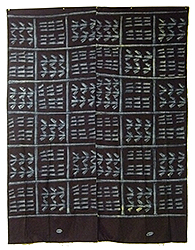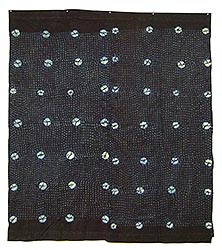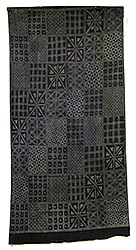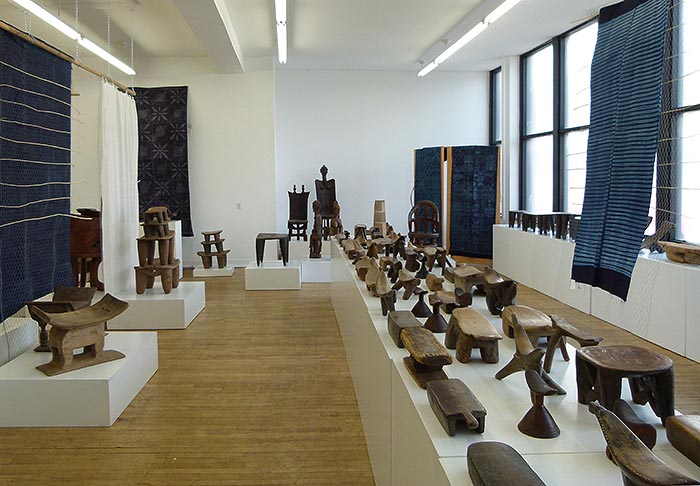These were all photographed as installed in the Take a Seat exhibition.
The Adire textiles below have been sold and are left here for reference and educational purposes.
For UNSOLD Adire textiles GO TO YORUBA ADIRE TIE DYE TEXTILES PAGE

These were all photographed as installed in the Take a Seat exhibition.
The Adire textiles below have been sold and are left here for reference and educational purposes.
For UNSOLD Adire textiles GO TO YORUBA ADIRE TIE DYE TEXTILES PAGE


7' high x 5' 9" wide SOLD |
 Adire Textile 1005 7' 3"" high x 5' wide SOLD |
 Adire Textile 1006 7' 2" high x 5' wide SOLD |

6' 4" high x 5' 8" wide SOLD |

8' 8" high x 4' 3" wide SOLD |
Adire Textile 1021 |
7' high x 32" wide SOLD |
7' 1" high x 4' wide SOLD |
8' 6" high x 4' 3" wide SOLD |
Photographs © Hamill Gallery
YORUBA, ADIRE TIE DYE TEXTILES ARCHIVES, Nigeria

These were all photographed as installed in the Take a Seat exhibition. Three textiles, 1001, 1012 and 1020, were hung and photographed folded over and the complete textiles were not viewable. The sizes given are for the whole cloth.
Adire is the name given to indigo dyed cloth produced by Yoruba women of south western Nigeria using a variety of resist dye techniques. Adire translates as tie and dye, and the earliest cloths were probably simple tied designs on locally-woven hand-spun cotton cloth much like those still produced in Mali. In the early decades of the twentieth century however, the new access to large quantities of imported shirting material made possible by the spread of European textile merchants in certain Yoruba towns, notably Abeokuta, enabled women dyers to become both artists and entrepreneurs in a booming new medium. New techniques of resist dyeing were developed, most notably the practice of hand-painting designs on the cloth with a cassava starch paste prior to dyeing. This was known as adire eleko. Alongside these a new style was soon developed that speeded up decoration by using metal stencils cut from the sheets of tin that lined tea-chests. Another method was to use sewn raffia, sometimes in combination with tied sections, while other cloths were simply folded repeatedly and tied or stitched in place. (1001, 1005, 1006, 1007, 1009) The basic shape of the cloth is that of two pieces of shirting material stitched together to create a women's wrapper cloth. Most of the designs were named, and popular designs included the jubilee pattern, (first produced for the jubilee of George V and Queen Mary in 1935), Olokun or "goddess of the sea", and Ibadadun "Ibadan is sweet" (1012, 1013, 1014, 1016, 1017, 1020, 1021).
GO TO YORUBA ADIRE TIE DYE TEXTILES PAGE
GO TO YORUBA ART PAGE
GO TO YORUBA EXHIBITION PAGE
GO TO AFRICAN ARTIFACTS PAGE
GO TO AFRICAN TRIBAL COSTUMES
PAGE
GO TO NEW ADDITIONS
PAGE
|
TRIBE |
OBJECT |
|
MJM10202017